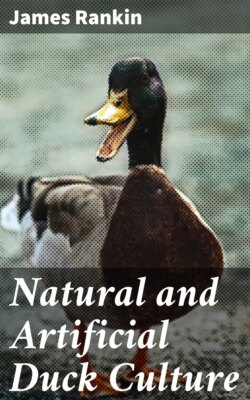Читать книгу Natural and Artificial Duck Culture - James Rankin - Страница 6
На сайте Литреса книга снята с продажи.
Pond or Lake Not Necessary.
ОглавлениеTable of Contents
The reason is very plain. Formerly people supposed that ducks could not be successfully grown without access to either pond, stream or coast line. As a natural consequence, a large share of the birds sold in the markets were grown on or near the coasts, fed largely on fish, partially fattened, and were anything but a tempting morsel. For years there have been large establishments on the Long Island shores devoted to duck-culture. Large seines and nets were used regularly to secure the fish on which the young birds were fed and fattened. These birds grew to a large size and attained a fine plumage, but, as might be surmised, their flesh was coarse and fishy. Occasionally a person was found who relished these birds, but the majority of people preferred to eat their fish and flesh separately. Now this is all changed.
Duck-culture of today is quite a different thing from the days of yore. Then, the young birds were confided to the tender mercies of the old hen. Now, the business is all done artificially. The artificially-grown, scrap-fed duckling of the interior is a far different bird from his fishy-fed brother of the coast. He has been educated to a complete indifference to water except to satisfy his thirst. Taught to take on flesh and fat instead of feathers, his body is widened out and rounded off, and, when properly denuded of his feathers, is a thing of beauty.
